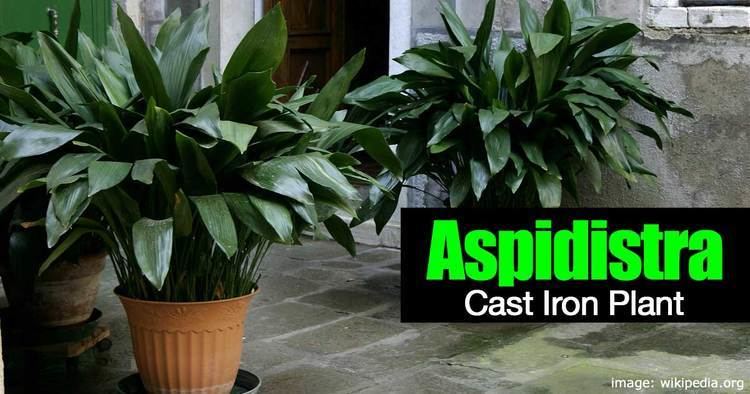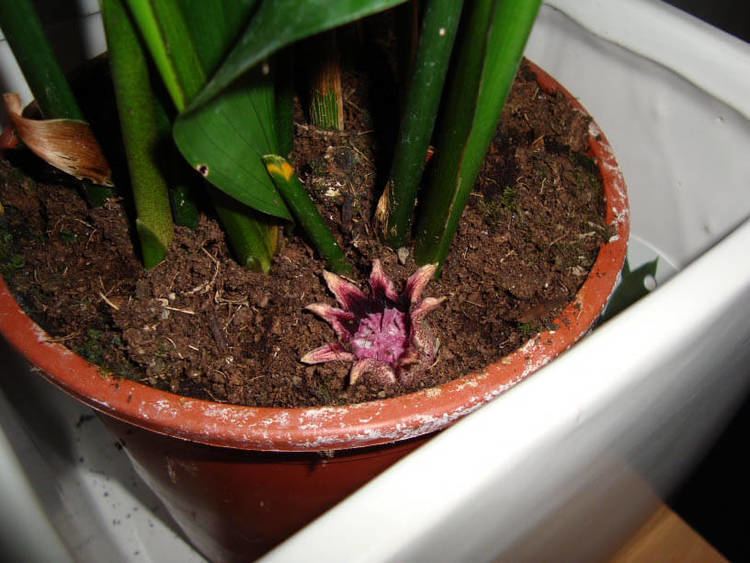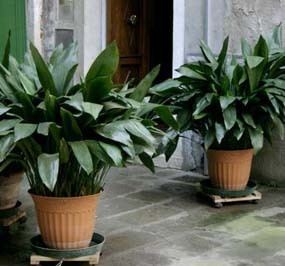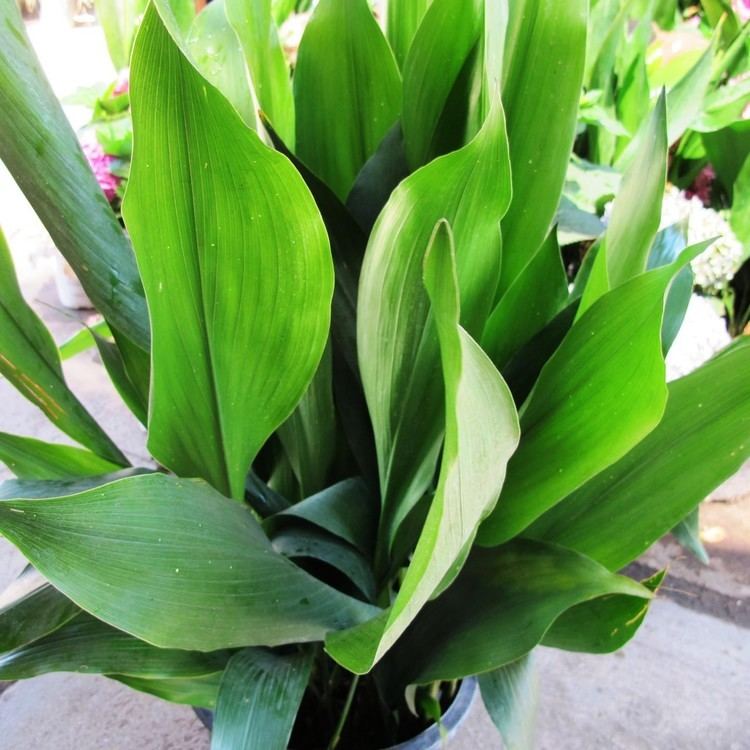Clade Monocots Scientific name Aspidistra Rank Genus | Clade Angiosperms | |
 | ||
Lower classifications Aspidistra elatior, Aspidistra yingjiangensis, Aspidistra nikolaii | ||
Aspidistra care instructions
Aspidistra /ˌæspᵻˈdɪstrə/ is a genus of flowering plants in the family Asparagaceae, subfamily Nolinoideae, native to eastern and southeastern Asia, particularly China and Vietnam. They grow in shade under trees and shrubs. Their leaves arise more or less directly from ground level, where their flowers also appear. The number of species known has increased considerably from the 1980s onwards, with around 100 accepted as of July 2013. Aspidistra elatior is common worldwide as a foliage house plant that is very tolerant of neglect. It and other species can also be grown in shade outside, where they are generally hardy to −5 °C (23 °F).
Contents
- Aspidistra care instructions
- Description
- Taxonomy
- Species
- Distribution and ecology
- Cultivation and uses
- In popular culture
- References
Description

Species of Aspidistra are perennial herbaceous plants growing from rhizomes. The leaves are either solitary or are grouped in small "tufts" of two to four. They arise more or less directly from the rhizome, rather than being borne on stems. Each leaf has a long stalk (petiole) and a blade with many veins. The flowering stem (scape) is usually very short so that the flowers appear low down among the leaves. The fleshy flowers are bell-, urn- or cup-shaped. They vary considerably in size and shape, although few are showy. The flowers of A. longipedunculata are yellow and, unusually for the genus, are borne on scapes up to 20 cm (8 in) high. A. grandiflora has spider-like flowers up to 12 cm (5 in) across. The flower has a large stigma with a flattened top. The fruit is a berry, often with a single seed.
Taxonomy
The genus Aspidistra was named by John Ker Gawler in 1822. The genus was at one time placed in a broadly defined Liliaceae, along with many other lilioid monocots. It has also been placed in the families Convallariaceae and Ruscaceae. The APG III system of 2009 places it in the family Asparagaceae, subfamily Nolinoideae.
Species

Aspidistra is a genus that was largely ignored by field botanists until the 1980s onwards, and there has been a very rapid rise in the number of recognised species since then. Some 8 to 10 species were known in the late 1970s; 30 new species were described from China in the 1980s. Subsequently more new species were found in Vietnam. The online Flora of China uses a narrow definition of species, producing a total of about 55, saying that the genus has "never been well studied". In 2008, Tillich provided a key to the 93 species known at that time.
As of July 2013, the World Checklist of Selected Plant Families (WCSP) accepted 101 species:
Two species were published in 2013, but as of July 2013 were not accepted by WCSP:
Distribution and ecology

Species of Aspidistra are part of the ground flora, growing in forests and under shrubs, in areas of high rainfall, from eastern India, Indochina and China through to Japan. The largest number of species are found in Guangxi Province, China, with Vietnam occupying second place. Few species have a broad distribution, with many being endemic to China or Vietnam.
It has long been said that slugs and snails pollinate Aspidistra flowers. This has been described as a "myth". Amphipods, small terrestrial crustaceans, are responsible for pollinating A. elatior in Japan. Amphipods have also been shown to pollinate species of Aspidistra introduced to Australia. Springtails and fungus gnats have also been suggested as pollinators. The newly described Vietnamese species A. phanluongii is probably pollinated by flies of the genus Megaselia.
Cultivation and uses
Aspidistra elatior, the "cast-iron plant", is a popular houseplant, surviving shade, cool conditions and neglect. It is one of several species of Aspidistra that can be grown successfully outdoors in shade in temperate climates, where they will generally cope with temperatures down to −5 °C (23 °F), being killed by frosts of −5 to −10 °C (23 to 14 °F) or below. In addition to shade, aspidistras require an open, acidic and humus-rich soil. Species suggested for growing outdoors in the UK include A. diabuensis, A. elatior, A. lurida, A. typica, A. zongbyi and their cultivars.
In Japan, leaves of A. elatior have traditionally been cut into pieces and used in bento and osechi boxes to keep each food separated. However, imitations called "baran" are commonly used now.
In popular culture
As a popular foliage houseplant (particularly in British boarding houses), A. elatior became popular in late Victorian Britain, and was so commonplace that it became a symbol of middle class values. As such it was central to George Orwell's novel Keep the Aspidistra Flying, as a symbol of the need of the middle class to maintain respectability—according to Gordon Comstock, the novel's protagonist. It was further immortalised in the 1938 song "The Biggest Aspidistra in the World", which as sung by Gracie Fields became a popular wartime classic.
Aspidistras can withstand deep shade, neglect, dry soil, hot temperatures and polluted in-door air (from burning coal or natural gas) but are sensitive to bright sunlight.
"Aspidistra" was the codename (inspired by the above song) of a very powerful British radio transmitter used for propaganda and deception purposes against Nazi Germany during World War II.
